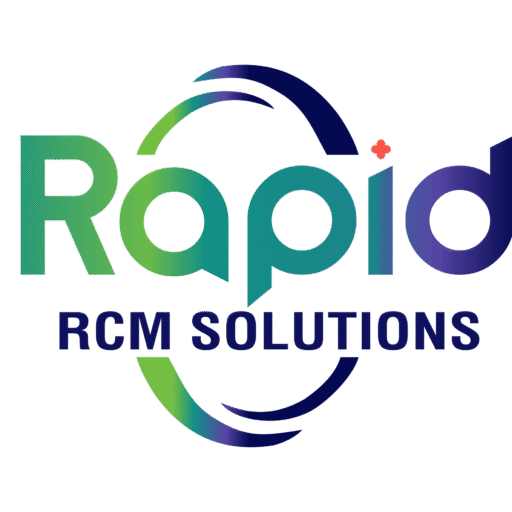When you’re running a cardiology practice, your focus should be on patients, on reading test results, adjusting medications, and catching heart problems before they become life-threatening. But many cardiology teams in the U.S. find their days pulled in another direction: chasing billing errors, untangling insurance denials, and wrestling with outdated systems that just don’t work together.
It’s a reality no physician signs up for, yet it affects the lifeblood of every practice, which is its revenue. And at the heart of these struggles are two silent profit-drainers: manual workflows and gaps in electronic health record (EHR) systems.
Why Cardiology Billing Feels Different
Cardiology isn’t like most specialties. The coding is layered, with complex combinations of CPT, HCPCS, and ICD-10 codes. A single patient visit might include diagnostic tests, imaging, and therapeutic procedures, all of which must be documented with precision. One small slip, say, missing a modifier or entering the wrong code for a stress test, can mean a denied claim.
Add to that the high cost of cardiology procedures. When claims are denied, practices don’t just lose a few hundred dollars. They can lose thousands. That’s why efficient, accurate billing isn’t just a back-office function in cardiology, but it’s a financial safeguard.
The Weight of Manual Workflows
Now we should speak about the true bottleneck, the manual work.
Even today, a lot of practices are based on staff requirements to re-key information between systems, check payer rules manually, or monitor claim statuses manually. This may seem to be manageable at first. However, as patient numbers increase and payer standards become more demanding, these paper-based activities start accumulating.
This is what will occur when the billing remains in manual mode:
More mistakes: With each additional keystroke, you are giving someone a chance to make a mistake.
Reduced claim turnaround: Claims remain pending as staff triple-check the information.
Staff burnout: Billers and front-office departments spend all day putting out blazes rather than working proactively.
Revenue leakage: Denials require small errors, and the denials are often not appealed at all.
EHR Gaps: A Silent Roadblock
EHRs were supposed to make life easier. But for many cardiology practices, they’ve become another source of frustration.
Some systems don’t communicate well with billing platforms. Others lack specialty-specific templates for cardiology, which means billers are left guessing or filling in details after the fact. This disconnect creates missing information, coding mismatches, and delays.
For example, if a patient’s echocardiogram results aren’t linked properly to the billing side, it might look like the procedure never happened. That’s a denial waiting to happen. And fixing it isn’t quick; your staff has to dig through records, call the payer, and resubmit.
Multiply that across dozens of claims a week, and you can see why so many practices feel like they’re drowning.
The Financial Ripple Effect
Manual processes and EHR loopholes are not a mere inconvenience. They carry a trickle-down effect on the whole practice.
Slow cash flow: Payments are delayed, and it puts a strain on day-to-day operations.
Lost revenue: Denials that cannot be reworked are just money left on the table.
Lower patient satisfaction: Once billing mistakes extend into patient statements, confidence is struck.
Burned-out employees: Staff turnover and burnout increase when teams have more time working on solving issues than preventing them.
For small and mid-sized cardiology practices, these challenges can mean the difference between staying profitable and falling behind.
Why Many Practices Are Rethinking Their Approach
Across the U.S., more cardiology groups are rethinking how they handle billing. They’re realizing that trying to patch together manual processes with half-integrated EHRs is a losing battle.
Some are moving toward advanced billing software that automates coding suggestions, eligibility checks, and claim tracking. Others are partnering with specialized medical billing teams who understand the unique challenges of cardiology. Both paths share one goal: to reduce the hidden costs of inefficiency.
A Practical Way Forward
What can cardiology practices do to begin to relieve these burdens?
Audit your workflows. Trace the areas in which staff take the most time in billing. You will often get repeat bottlenecks that can be solved by automation.
Evaluate your EHR. When your existing system gives you more issues than solutions, consider add-ons or integrations specific to cardiology billing.
Train continuously. Payer rules change fast. Regular training keeps staff confident and reduces avoidable errors.
Consider outside help. Claims can be processed at a quicker pace by specialized billing teams, errors are identified sooner, and better rates of reimbursement are achieved than when an in-house staff has to multitask.
Keeping the Focus on Patients
By the end of the day, all those minutes your staff is reworking claims or tracking down missing documentation are minutes that are taken out of the actual need: taking care of patients. And in cardiology, where lives are at stake, and where timely decision-making is paramount, that distraction has a tangible price.
Paper procedures and failed EHR links do not simply cost money. They eat up energy, morale, and patient confidence. And this is why it is not just a matter of dollars to deal with them; it is a matter of the health of your practice in the long run.
The Bottom Line
Cardiology medical billing challenges aren’t going away on their own. In fact, as payer rules tighten and patient volumes rise, practices that cling to outdated, manual systems will feel the pressure more than ever.
But the good news is, there are solutions. Cardiology practices can recover lost revenue and avoid frustrations on a daily basis, whether through improved tools, smarter integrations, or special billing partners.
When you find yourself and your team engaged in the same billing battles each month, it might be time to reach out to seasoned medical billing professionals who are familiar with cardiology. Through proper support, your practice can refocus back to where it belongs, which is the patients and those who make a case of trust in you.





